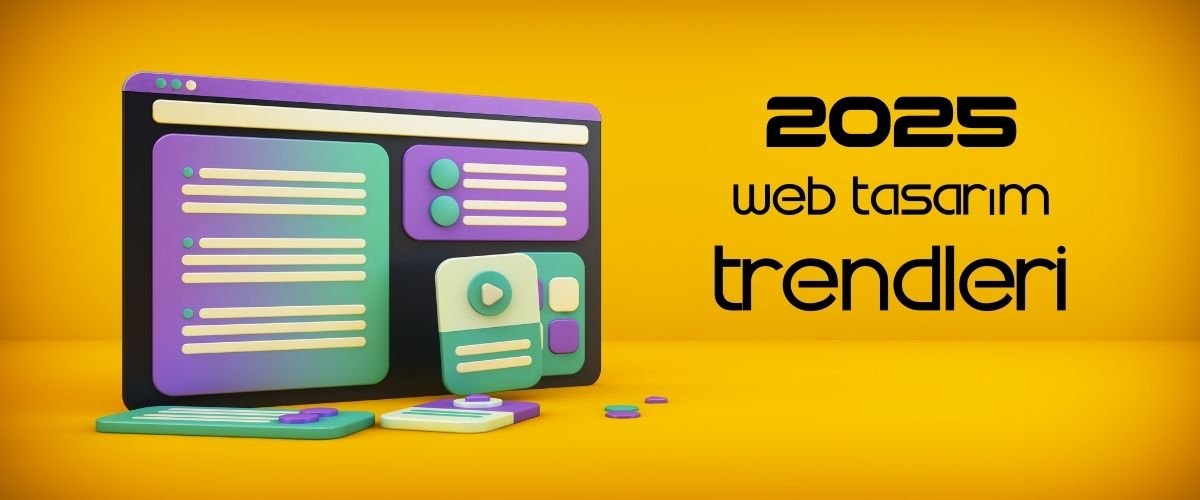2025 Web Design Trends: What’s Shaping the Future?
The digital landscape is evolving faster than ever, and web design trends are at the forefront of this transformation. As we step into 2025, designers and developers must stay ahead of the curve to create engaging, user-friendly, and visually stunning websites. Whether you're a business owner, a designer, or just curious about the future of the web, here’s a deep dive into the most exciting web design trends of 2025.
1. AI-Powered Personalization
Hyper-Tailored User Experiences
AI is no longer just a buzzword—it’s revolutionizing how websites interact with users. In 2025, expect to see more AI-driven personalization, where websites dynamically adjust content, layouts, and even color schemes based on user behavior, location, and preferences.
Chatbots & Virtual Assistants 2.0
Chatbots are getting smarter, offering near-human interactions. With advancements in natural language processing (NLP), AI assistants can now handle complex queries, making customer support seamless and intuitive.
2. Immersive 3D & Interactive Elements
The Rise of 3D Graphics
Thanks to faster internet speeds and improved browser capabilities, 3D elements are becoming mainstream. From product showcases to interactive backgrounds, 3D design adds depth and engagement to websites.
Micro-Interactions & Scroll Animations
Small animations that respond to user actions (like hovering or scrolling) make browsing more enjoyable. In 2025, expect even more creative micro-interactions that guide users naturally through a site.
3. Neo-Brutalism & Bold Design Choices
Raw, Unfiltered Aesthetics
Neo-brutalism is making waves with its bold, high-contrast designs, asymmetrical layouts, and unpolished textures. This trend rejects minimalism in favor of striking, attention-grabbing visuals.
Maximalist Typography
Oversized, experimental fonts are taking center stage. Designers are mixing typefaces and playing with dynamic text animations to create memorable brand identities.
4. Dark Mode & Advanced Color Schemes
Beyond Basic Dark Mode
Dark mode is now a standard, but 2025 pushes it further with adaptive themes that adjust based on time of day or user preference. Plus, new color tools allow for richer, more accessible palettes.
Biophilic Design & Nature-Inspired Colors
With growing awareness of mental well-being, websites are incorporating calming earthy tones and organic shapes to create a soothing digital experience.
5. Voice User Interfaces (VUIs) & Hands-Free Navigation
Voice Search Optimization
As smart speakers and voice assistants become ubiquitous, optimizing websites for voice search is crucial. Structured data and conversational content will dominate SEO strategies.
Voice-Activated UI
Some websites now offer full voice navigation, allowing users to browse hands-free—perfect for accessibility and multitasking.
6. Sustainability in Web Design
Eco-Friendly Hosting & Low-Energy Designs
Green web hosting and optimized performance reduce carbon footprints. Designers are prioritizing lightweight sites with efficient coding to minimize energy consumption.
Ethical Design Practices
Transparent data usage, inclusive design, and user privacy are becoming key considerations in 2025’s digital ethics movement.
7. AR/VR Integration for Enhanced Engagement
Virtual Showrooms & Try-Ons
E-commerce sites are leveraging AR to let users "try before they buy," from clothing to furniture. VR tours are also gaining traction in real estate and travel industries.
Web-Based AR (No App Required)
With WebXR, augmented reality experiences are now accessible directly through browsers, eliminating the need for separate apps.
8. Scrollytelling & Narrative-Driven Design
Storytelling Through Scroll
Instead of static pages, brands are using scroll-triggered animations to unfold stories dynamically, keeping users engaged from start to finish.
Interactive Case Studies
Businesses are presenting portfolios and case studies in an interactive format, allowing users to explore data and results at their own pace.
9. Ultra-Minimalist Navigation
Hidden Menus & Contextual UI
To reduce clutter, designers are adopting hidden navigation (like hamburger menus) and AI-driven contextual interfaces that appear only when needed.
Gesture-Based Controls
With mobile-first design evolving, swipe and gesture-based navigation is becoming more intuitive, especially for touchscreen users.
10. Cybersecurity-First Design
Visual Trust Signals
As online security concerns grow, websites are displaying trust badges, SSL indicators, and transparent privacy policies more prominently.
Biometric Authentication
Fingerprint and facial recognition logins are being integrated into web platforms for seamless yet secure access.
Final Thoughts: Staying Ahead in 2025
The future of web design is dynamic, user-centric, and deeply immersive. By embracing AI, bold aesthetics, sustainability, and cutting-edge tech like AR/VR, businesses can create unforgettable digital experiences.


